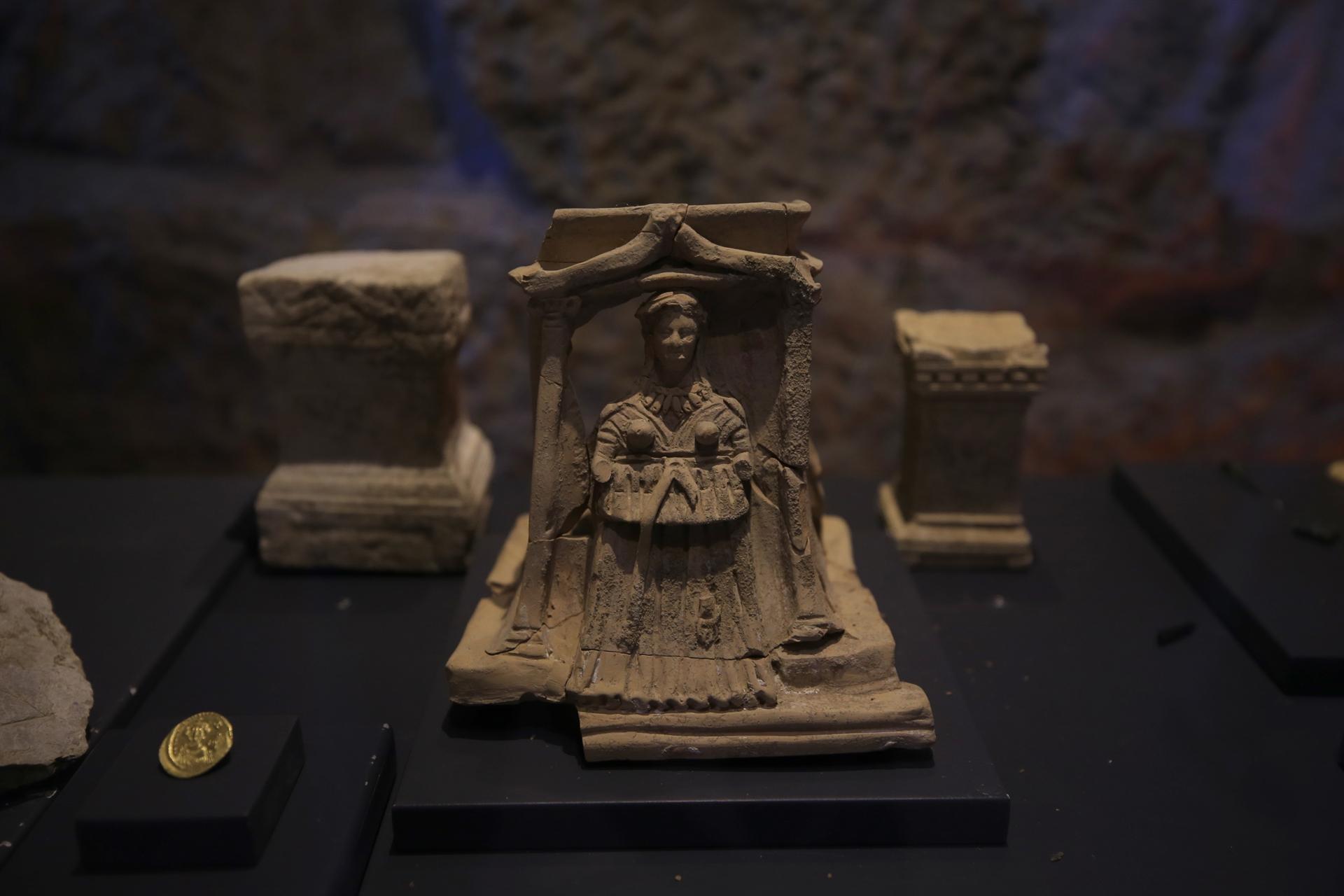
The Lycian Civilizations Museum in the southern province of Antalya stands out with its priceless works that provide information about the religious beliefs, economic and social life of the Lycian Union, where the first democratic practices in history were implemented.
A building that was built as a granarium (granary) in 129 B.C. in Andriake Ruins in the Demre district was turned into a museum and opened in 2016. The museum exhibits 1476 artifacts discovered during excavations in important cities of the union such as Patara, Myra, Xahthos, Tlos and Olympos.
The artifacts give clues about the religious beliefs, economic and social life of the Lycian people, who called themselves “the people of the land of lights,” taking visitors on a journey through history.
To visit the museum, visitors have to pass through Andriake Ruins, the harbor quarter of the ancient city of Myra. They can see the historical roads around the harbor, bath, church, agora, cistern and the purple paint workshop made from the sea creature called “murex” among the centuries-old olive trees at the ruins, which is like an open-air museum.
Visitors also get the chance to see 126 different bird species at a stream called “bird paradise,” which is right next to the museum.
In the museum, which shows animations of how cargoes were brought to the harbor in ancient times, visitors are first welcomed by the sculptures that were unearthed during the excavation conducted in the ancient city of Patara last year.
The artifacts such as customs inscriptions and votive steles with 12 gods, which shed light on the period they belong to, attract a great deal of tourist attention.
Speaking to the state-run Anadolu Agency, Nilüfer Sezgin, the museum’s director, said the museum’s position in a historical structure gives its visitors a different atmosphere.
Sezgin pointed out that there are three examples of the granary used as a museum building in the world, noting that taxes collected in the granary at that time were sent by ships to the places in need.
“Lycia is a very important civilization. The cities from Olympos to Fethiye form the Lycian Union. These cities are autonomous within themselves and they make decisions together against the outside. Cities have voting rights according to their economic power. This is known as the first democratic practice in history. It excites people to see the traces of such a civilization,” she said.
Stating that in addition to the artifacts belonging to the Lycians, they also found traces of the Roman, Byzantine and Ottoman rulers in the Lycian region, Sezgin said: “Visitors take a walk in the Andriake ruins, which is an open-air museum, and around the stream with 126 different bird species, and then reach the museum building, which is about 2,000 years old.”
“There are also many artworks belonging to different religions in the museum. For example, we discovered a synagogue during excavations right next to the museum in 2010. It was determined that Jews also lived in this region in the fifth century A.D.,” she added.
Sezgin pointed out that the region had suffered two major earthquakes and that the city was under the alluvial deposits due to the stream that flows through the city.
“This means a well-preserved city for archaeologists. We find structures standing up to the roof tiles under 10 meters of alluvium. In the following stages, as it is said by Professor Nevzat Çevik, the chief of excavations, ‘the Pompeii of Anatolia’ will be unearthed, and the value of the museum will increase day by day,” she said.